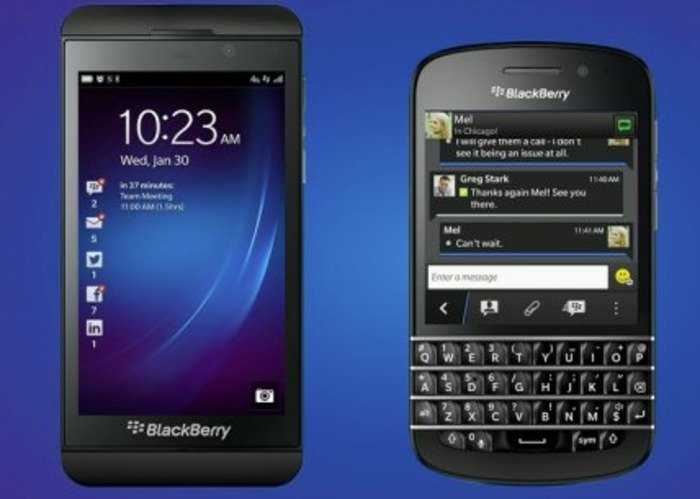Blackberry Z10 and Q10. Credit: Blackberry
Research in Motion, desperate to turn around its flagging fortunes, has laid the chips on the table for it final wager in the form of two new BlackBerry smartphones, the requisite collection of companion apps -- oh, and an announcement that it's not Research in Motion anymore.
The Canadian company has re-branded itself as BlackBerry, and last week introduced the touchscreen Z10 and the Q10 for users who remain firmly in the physical QWERTY keyboard camp.
The reviews are coming in, with most judging both handsets completely competent, ably ticking most the boxes on the current smartphone must-have checklist.
Both phones are powered by a 1.5 gigahertz dual core processor with 2 gigabytes of RAM and 16 gigabytes of storage. The Z10 has a 4.2-inch touchscreen while the Q10 has a square 3.1-inch display sitting above a physical keyboard BlackBerry says is the widest it's ever made. Both share rear facing 8-megapixel cameras and 2-megapixel front-facing cameras.
So in terms of CPU, RAM and storage, and in almost all other ways, the BlackBerry phones are right in the thick of things as far as smartphone design and specifications go.
And therein may lie the problem. Phones have made the rapid evolution from cellphone to feature phone to smartphone, and the technology and feature set of the modern smartphone are mature and fairly well set.
Unfortunately for BlackBerry, that evolution has been led and driven in equal measure by Apple with its iPhone and the multitude of phones running Google's Android.
Which is why most users have one or the other -- well, Windows Phone handsets are trying hard. To be enticed to move into the BlackBerry camp would require something new, or at least significantly improved.
The Z10 and the Q10 may be excellent smartphones -- the jury is just now beginning its deliberations -- but new, in terms of what they can do or the hardware they offer, they're not. Anyone asked to switch from an iPhone or Android to a Z10 or Q10 BlackBerry could be excused for responding with a justifiable, "Why?"
But BlackBerry's biggest challenge may come in the only area left where one smartphone platform can hope -- and attempt -- to differentiate itself from another: apps.
Throughout the development process of the new phones, BlackBerry has been desperately courting developers to build apps for the phones and the BlackBerry 10 operating system. At launch, it boasted a library of 70,000.
Unfortunately that's only a fraction of the apps available for the iPhone from Apple's App Store or Google Play's offerings for Android phones, both of which are about 750,000 and counting.
And while BlackBerry's app offerings include such popular ones as Facebook, Twitter, LinkedIn, Skype, and even Angry Birds, conspicuous by their absence are Google Maps, YouTube, Pandora, Netflix and Instagram.
Although those apps are very likely to eventually feature in BlackBerry's library, it will be one more instance of having to try to catch up to the iPhone/Android juggernaut.
While BlackBerry has a loyal base of subscribers going back the era when a "CrackBerry" was in the briefcase of every young, hard-charging businessman or professional -- and favored by more than a few government agencies and the occasional journalist -- for the company to survive it's going to have to expand past that into the general smartphone universe and catch the attention of users, particularly young ones who drive smartphone consumption and are always up for the latest bells and whistles.
It remains to be seen if BlackBerry's bells and whistles are anything more than the muted cries of a company teetering on the edge of irrelevance.















